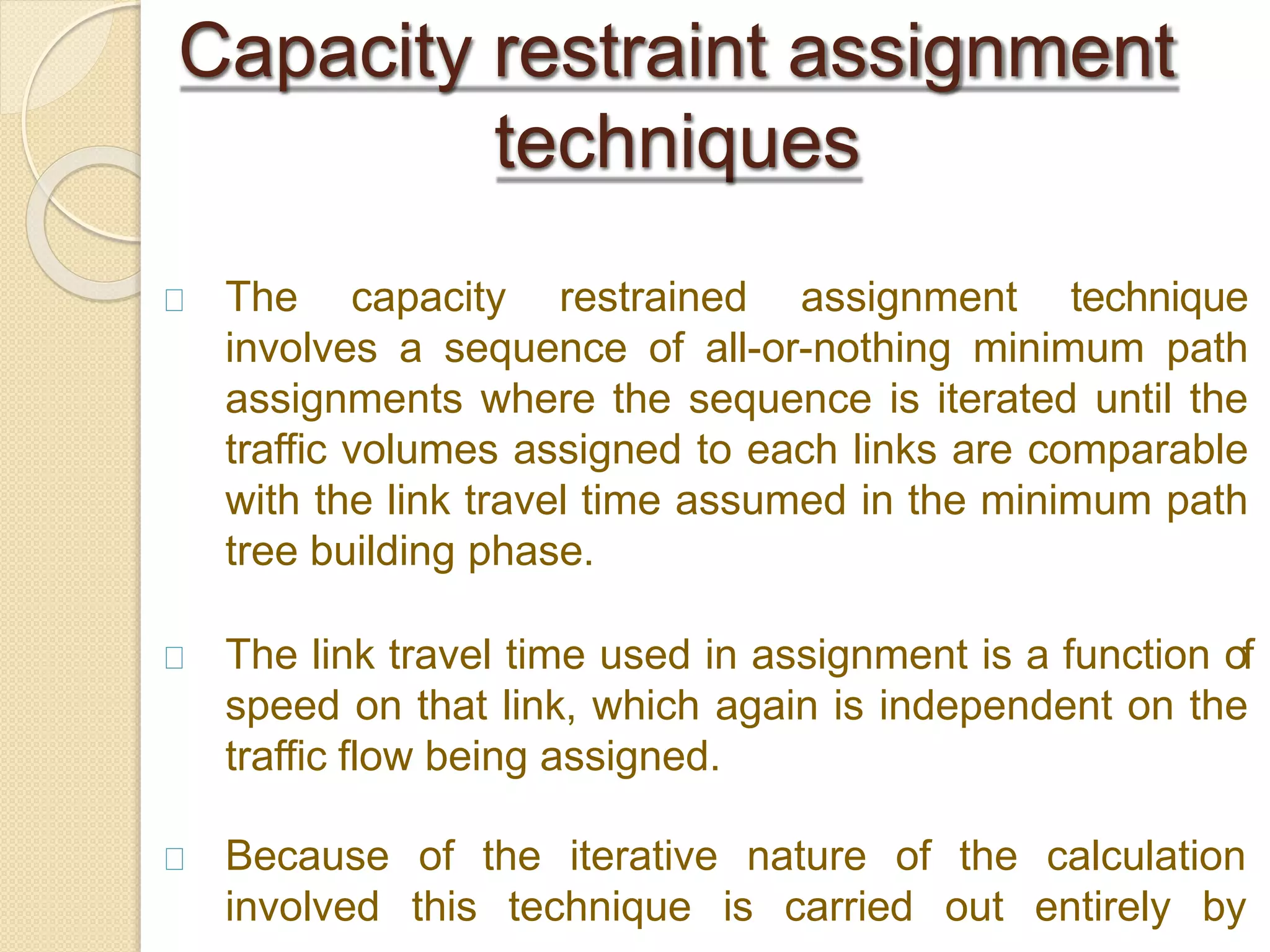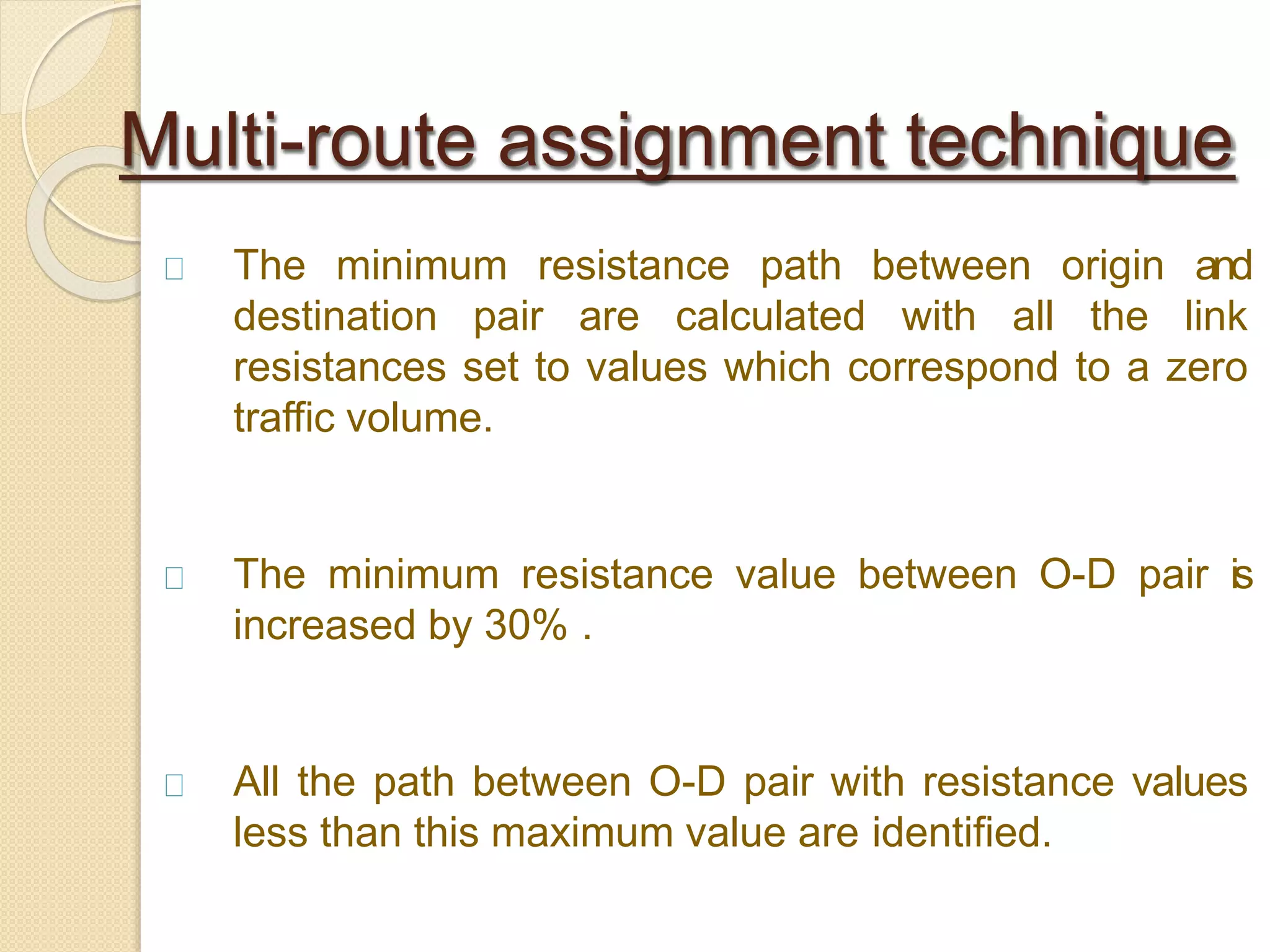This document summarizes different techniques for assigning routes in transportation network modeling. It describes the all-or-nothing assignment method, direction curve method, capacity restraint assignment techniques, and multi-route assignment technique. For each method, it provides details on the approach, limitations, and examples of models that use the technique. The document is presented by five students as part of their course on urban transportation systems.
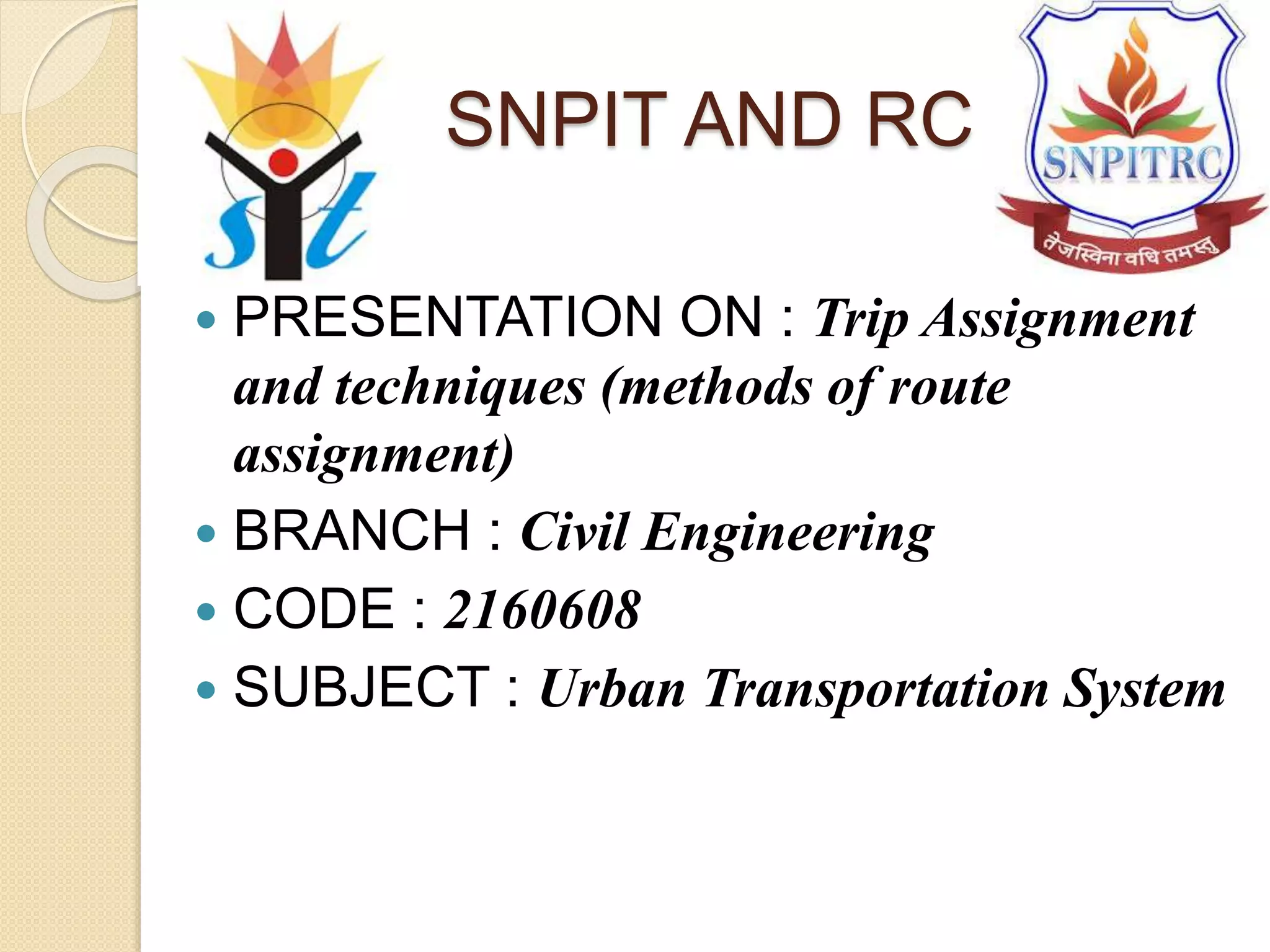

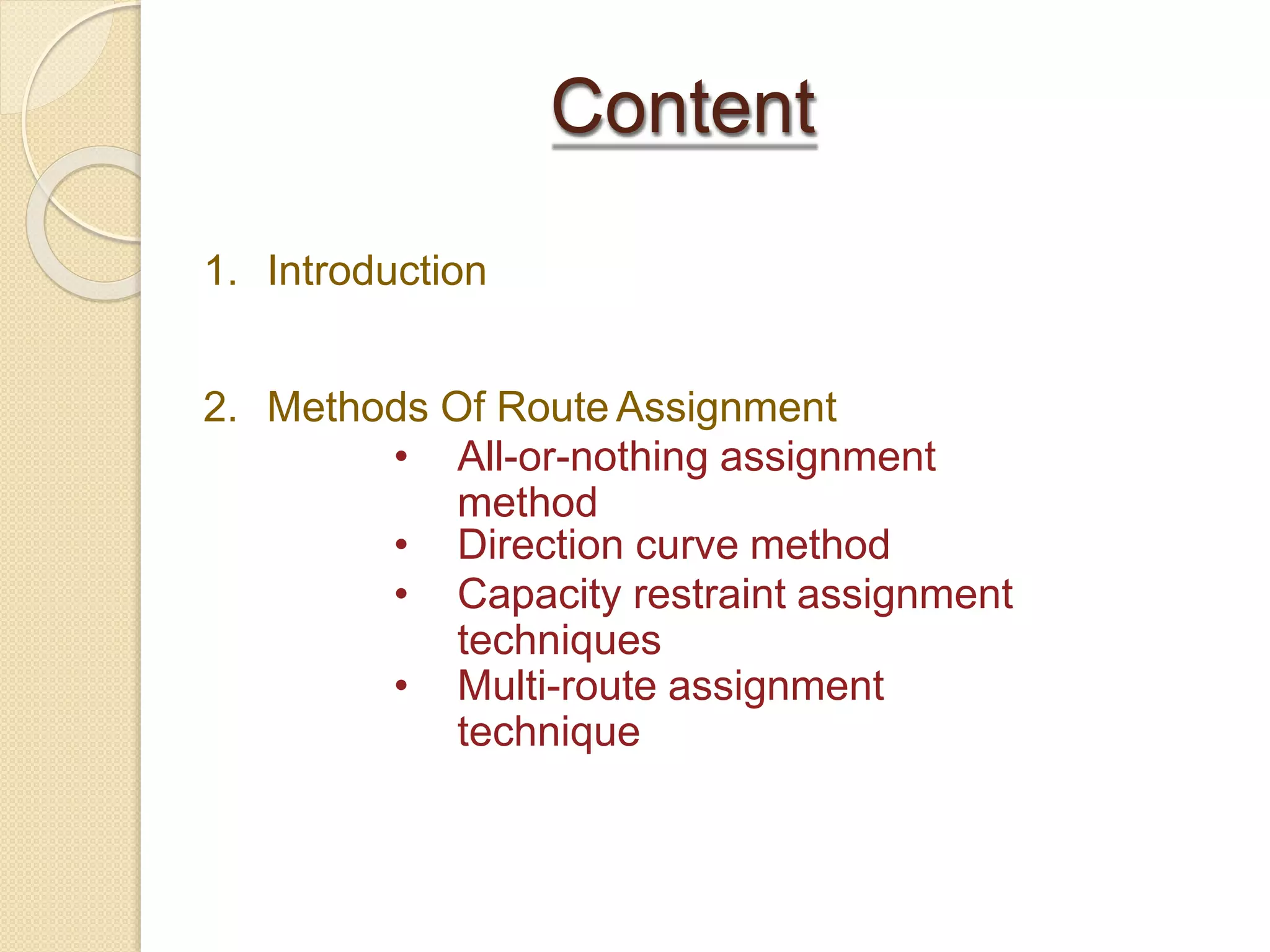

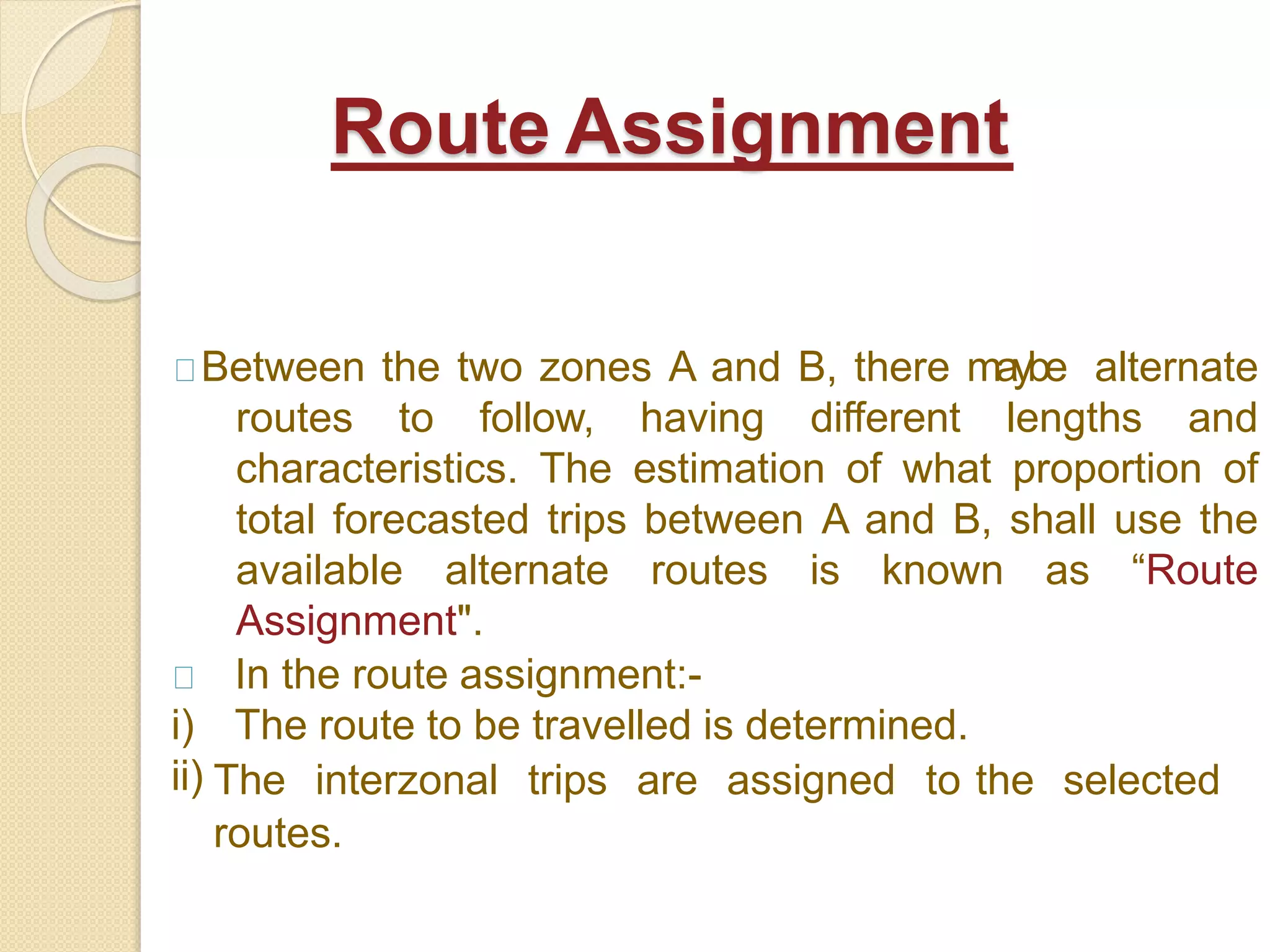

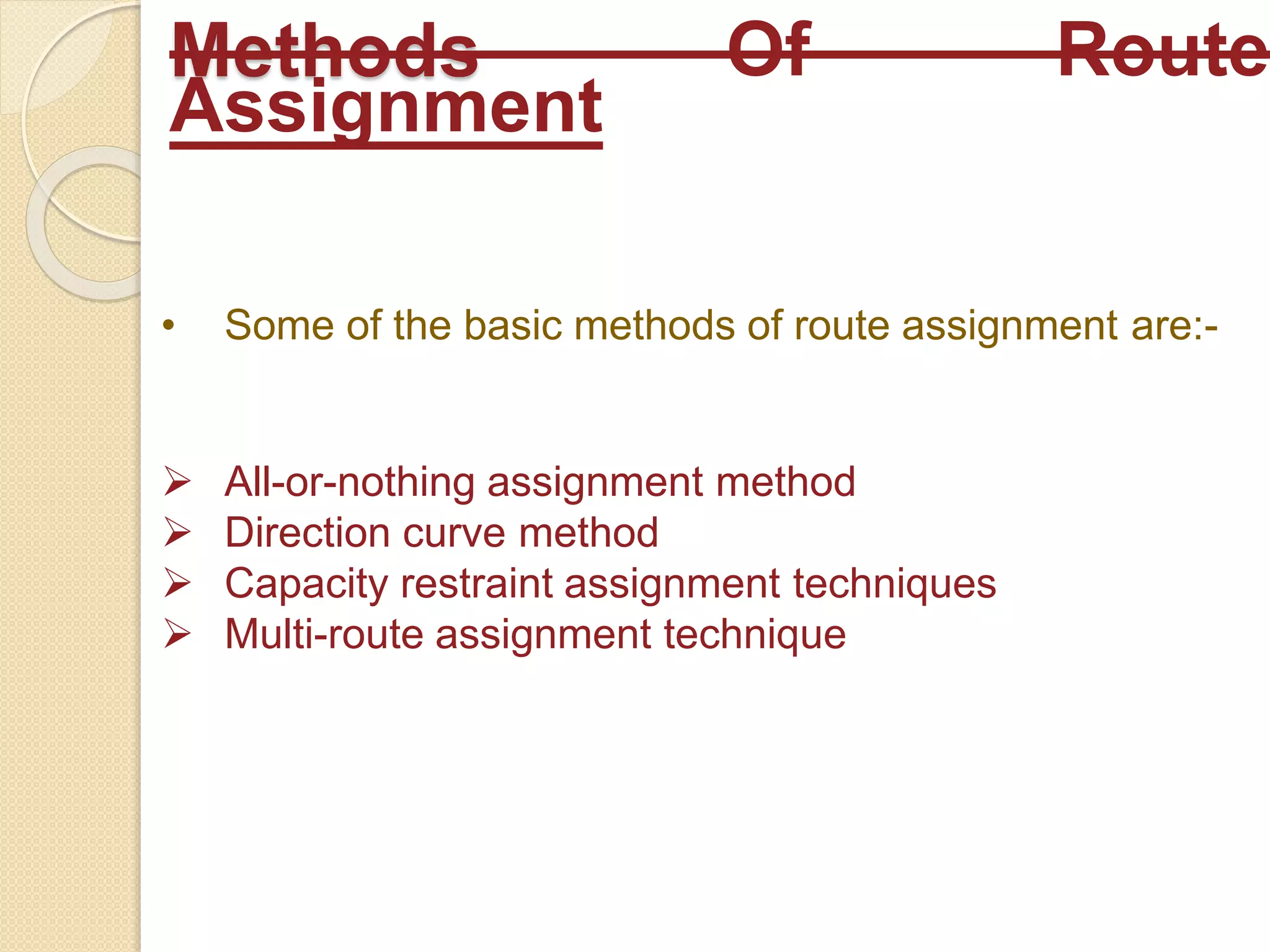

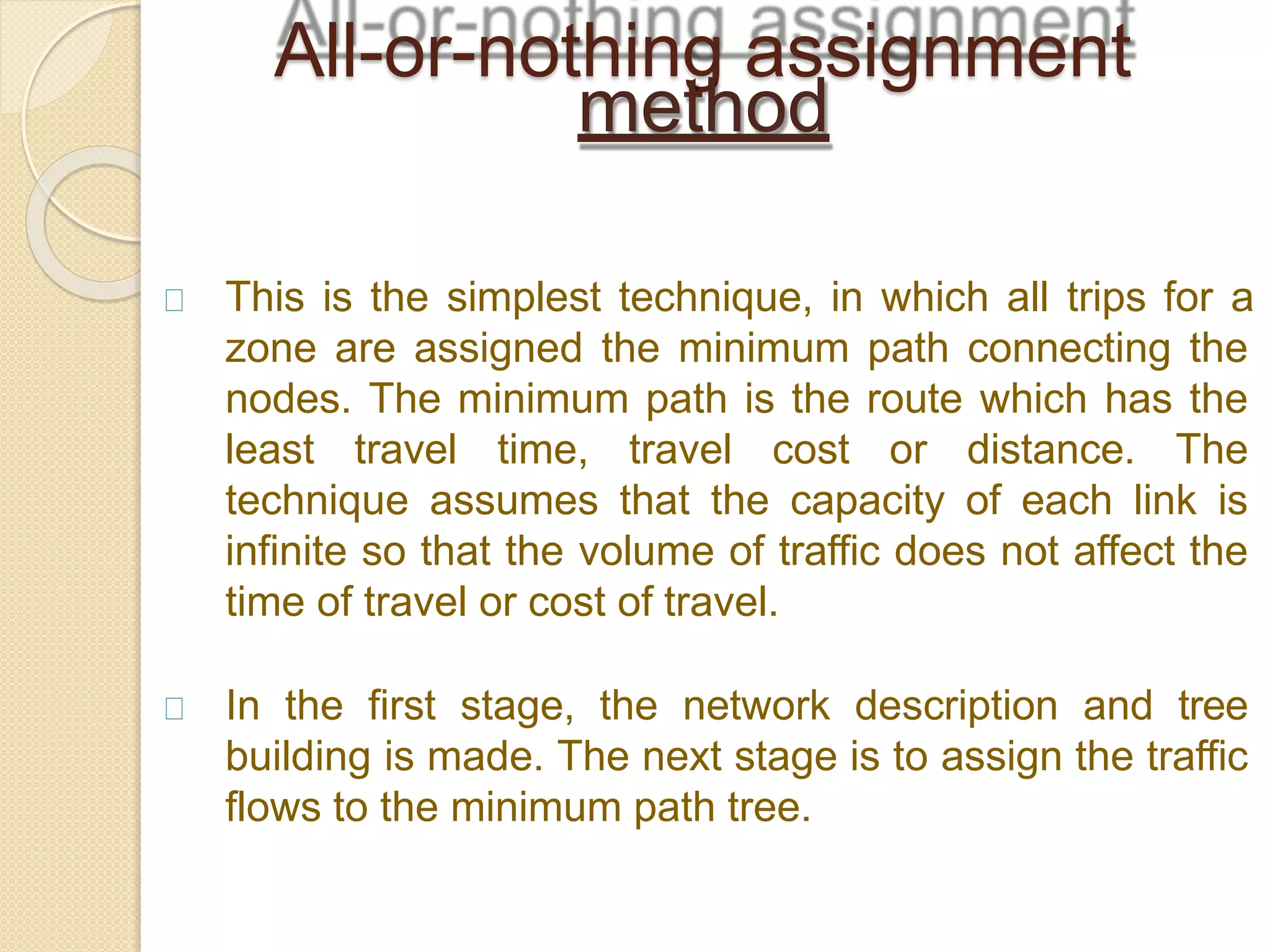

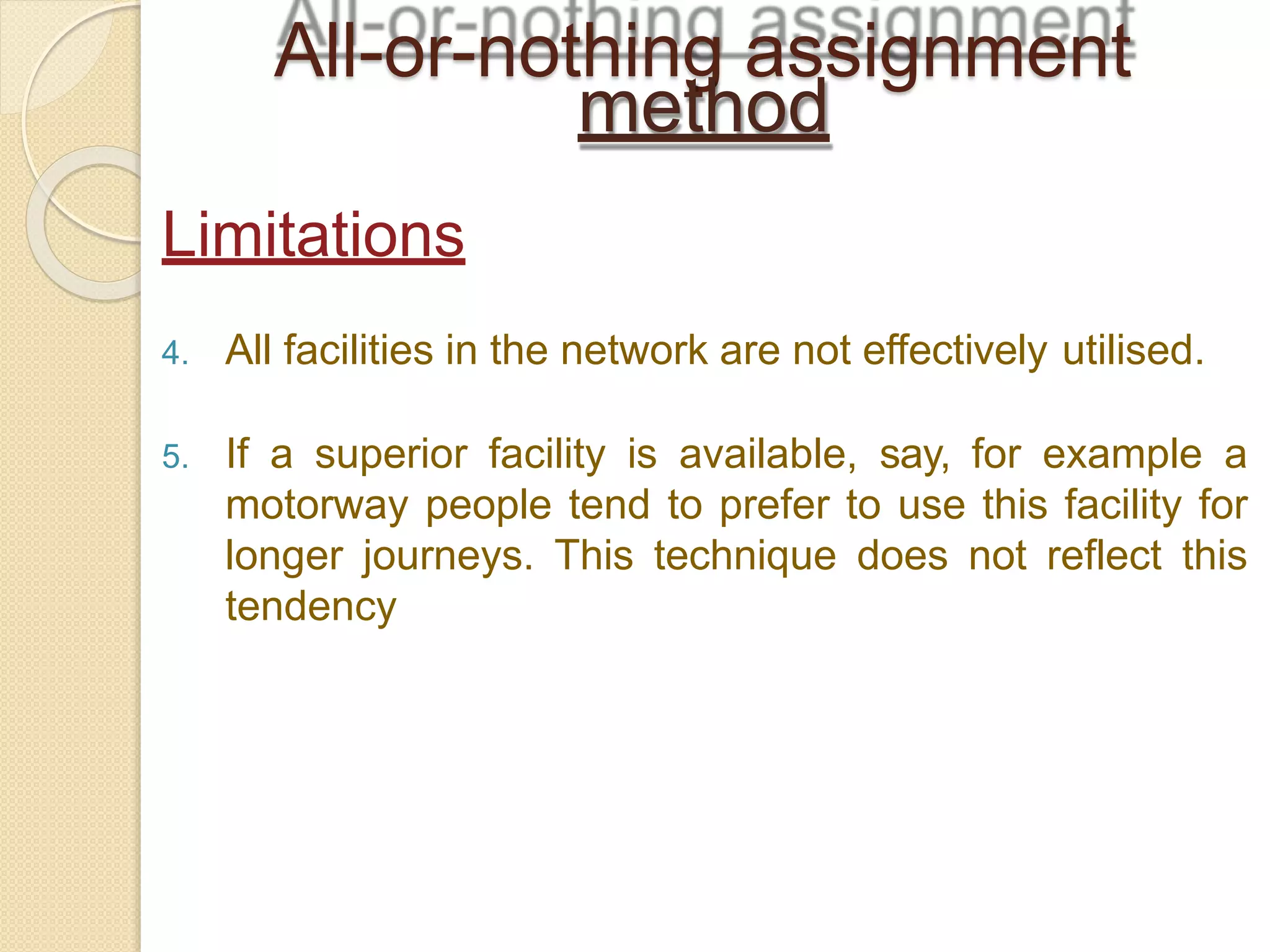

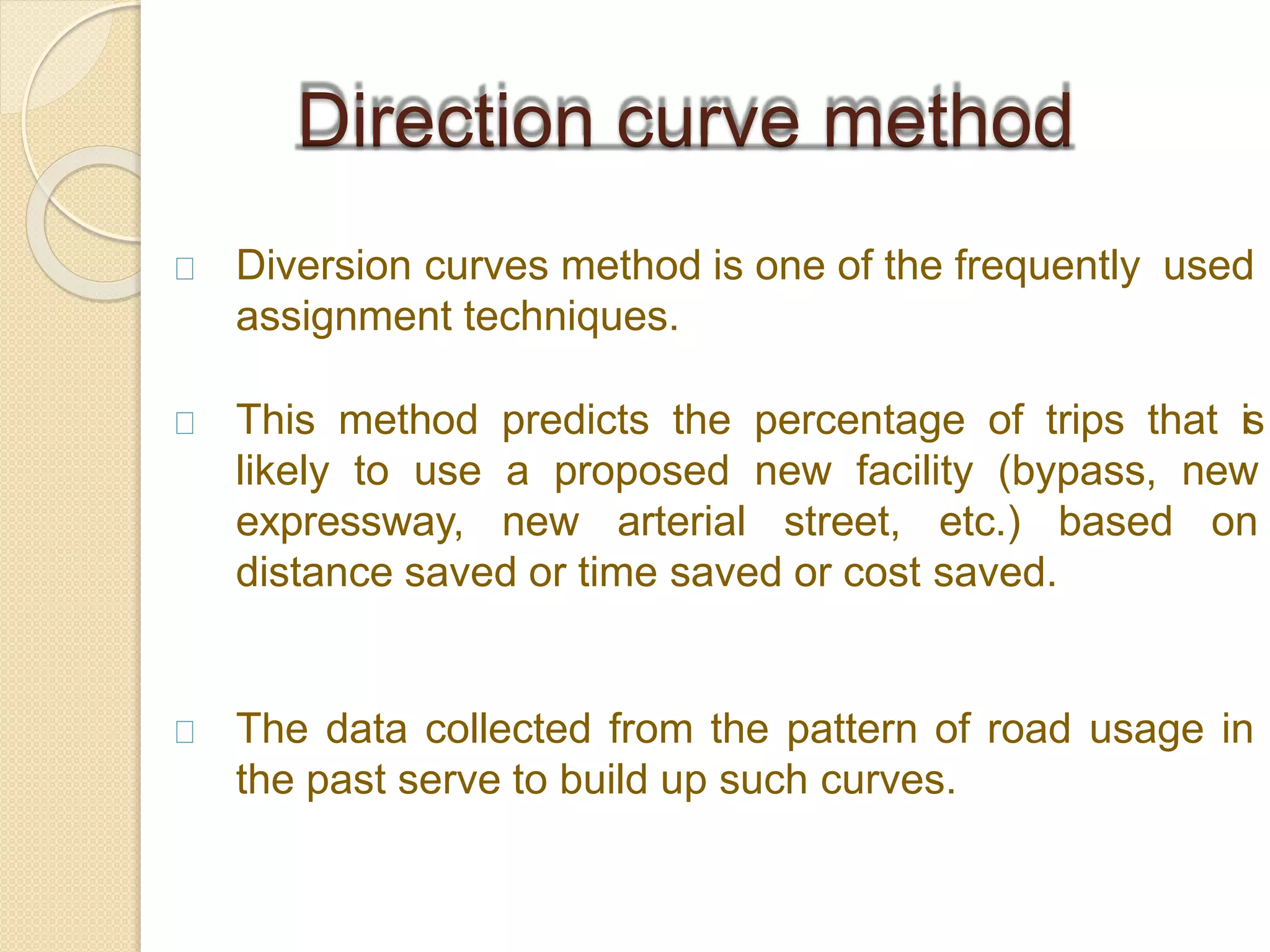
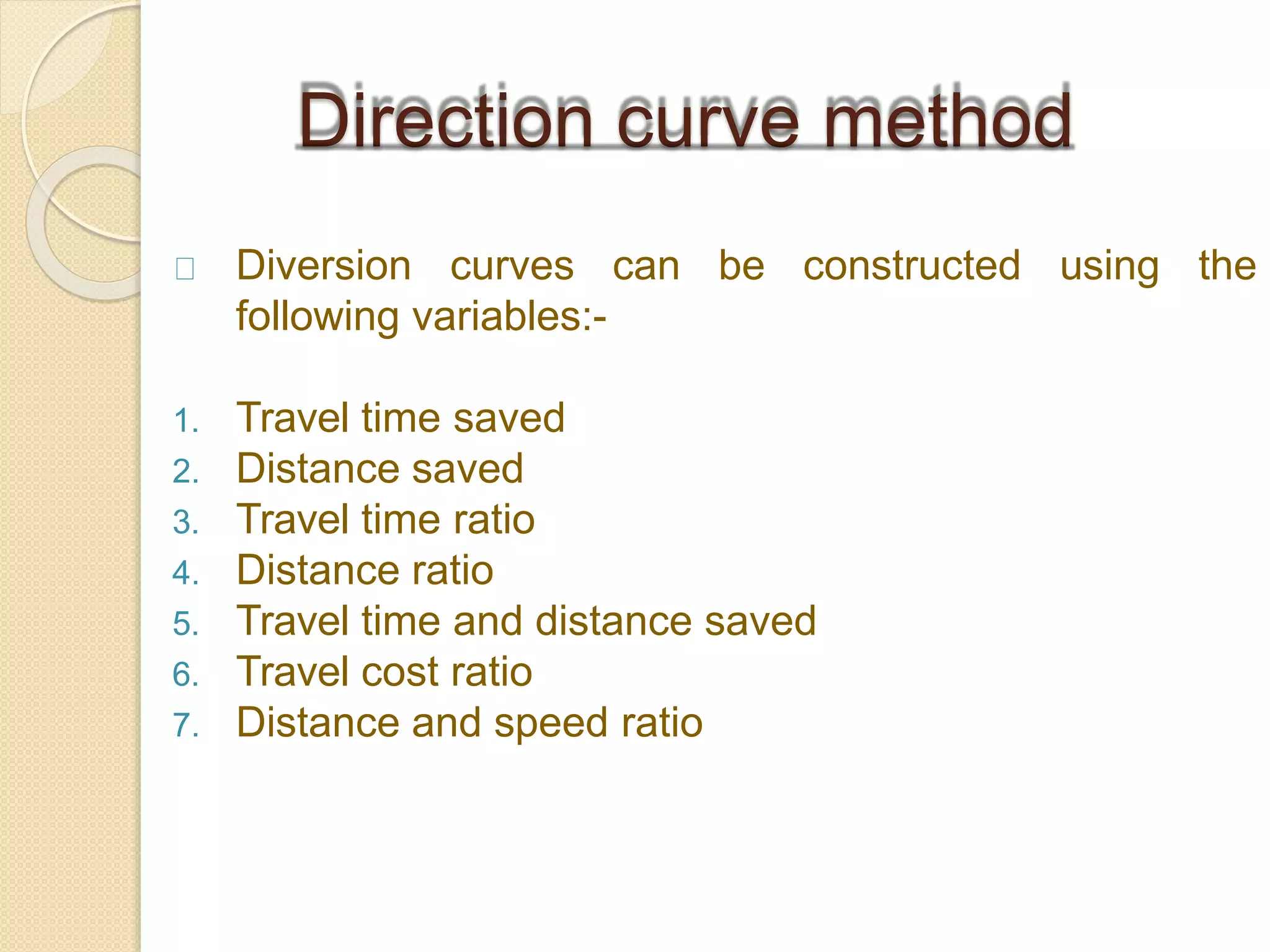
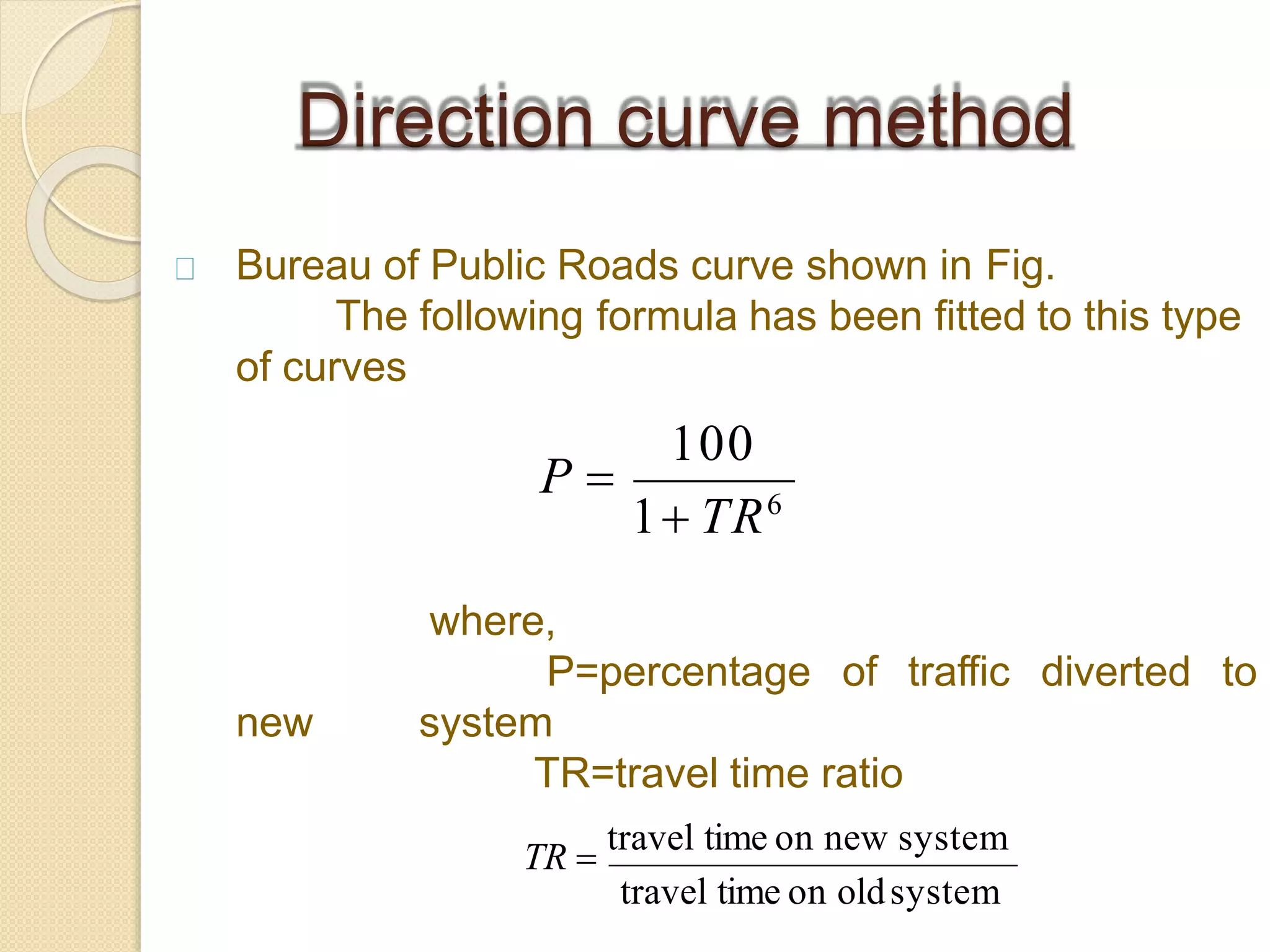
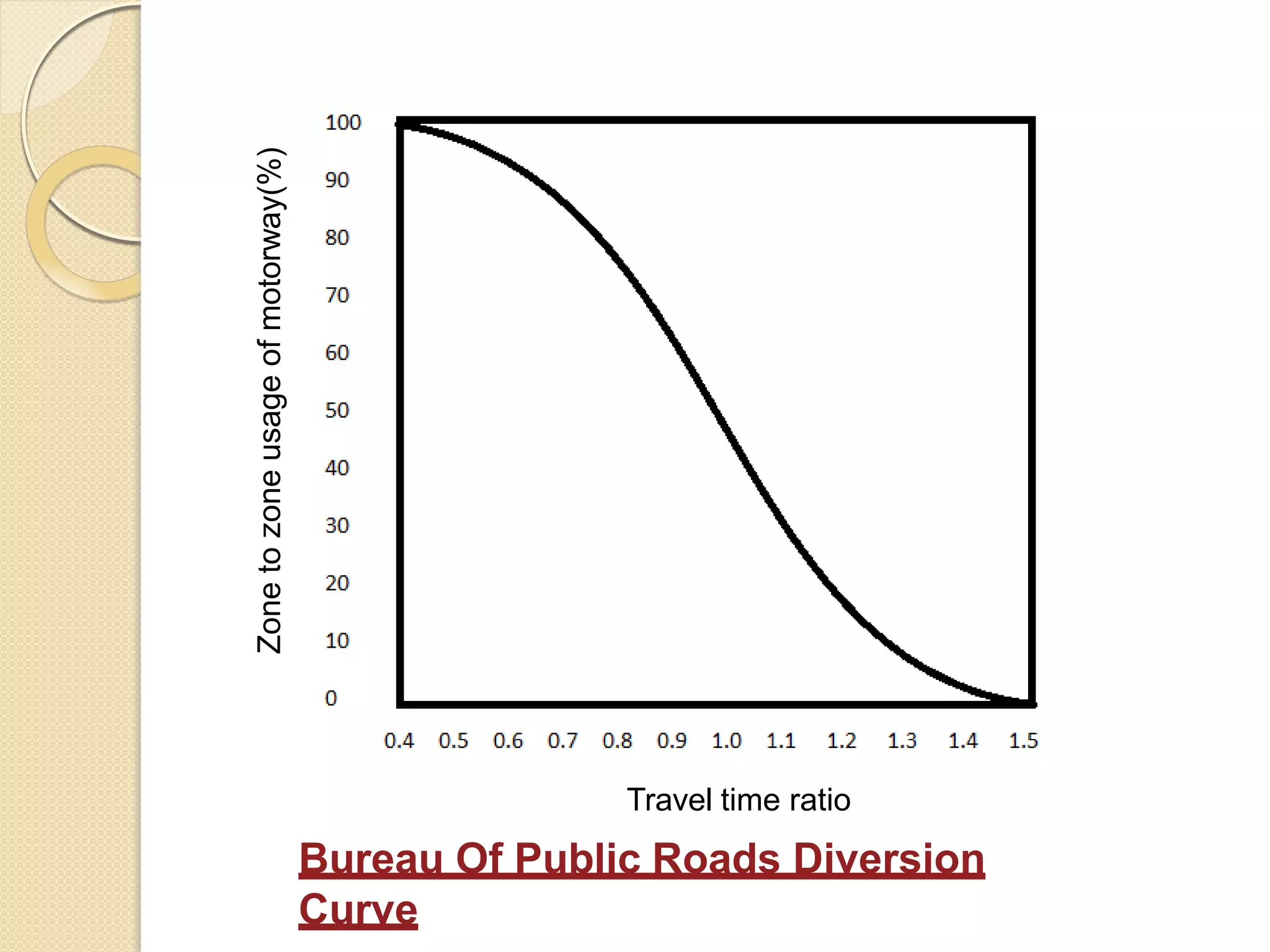
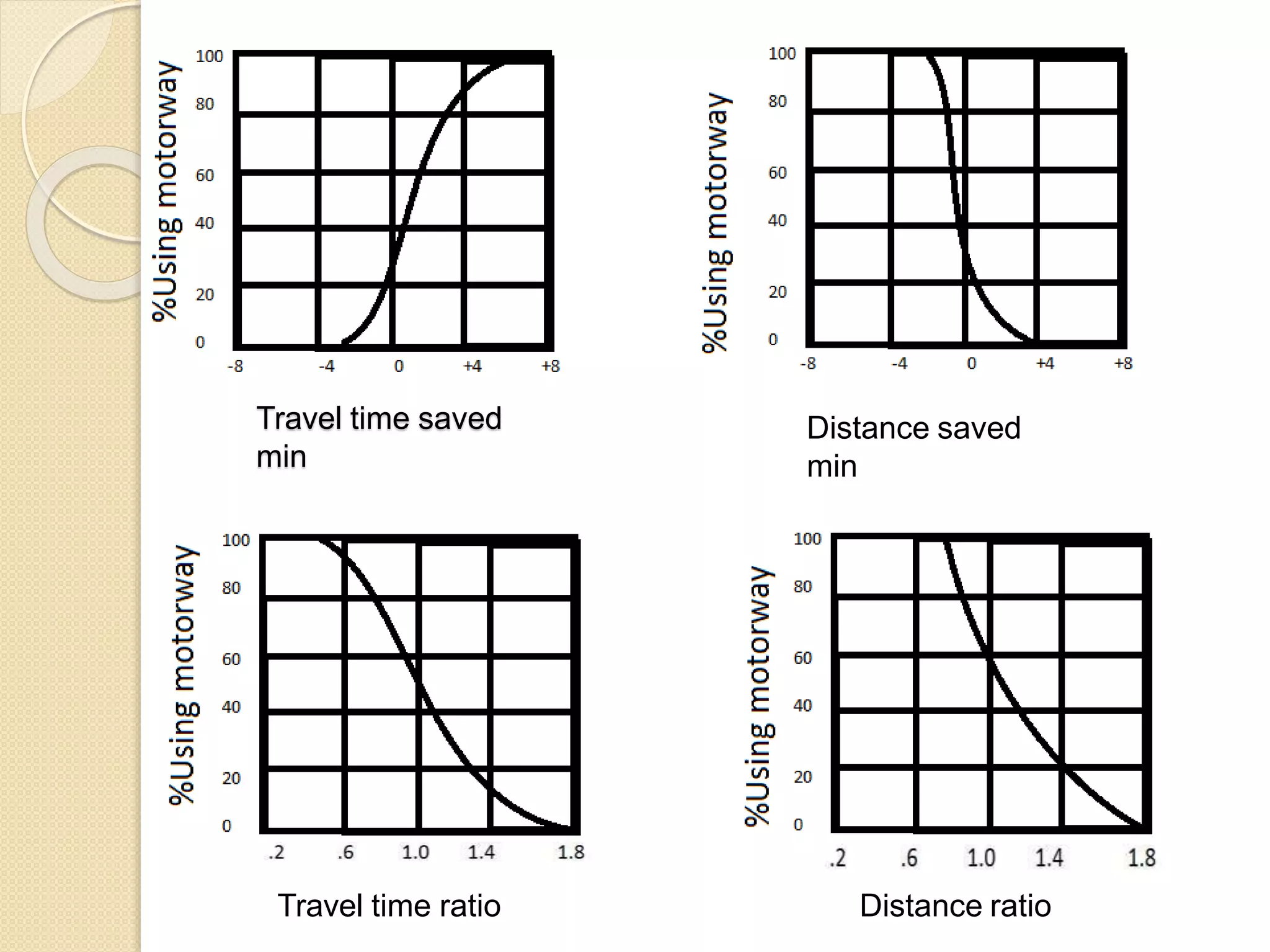
![on theirCalifornia Division of Highways, based
observations on freeway in California in 1956,
developed the following equation for arriving at
percentage use of freeway:
route
where, P=percentage of motorway usage
d=distance saved in miles on new
t=time saved in minutes on new
route
The main drawback of diversion curve assignments is
that only two alternative routes for each pair of zones
Direction curve method
[(d - 0.5t) 2
4.5]0.5
50(d 0.5t)
P 50](https://image.slidesharecdn.com/uts-b2group-methodsofrouteassignment-190915155253/75/Methods-of-route-assignment-18-2048.jpg)

